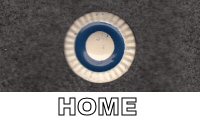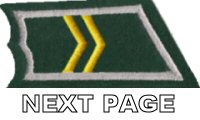



FORMATIONS (TO&E), PART 9
World War II: Engineer Corps / Sappers
During Winter War (1939 - 1940) the basic unit of Finnish Engineer Corps was Engineer Company, 33 of which were established for the Winter War. However, the sizes and organisations of Finnish Winter War era Engineer Companies varied considerably. Below are three versions, which should give some idea about the basic structure. At that time Engineers had been intended to be used as experts, which made demolitions, build minefields, build entrenchment and bridges etc, but rarely took part in combat in frontline. However, during the war also Engineer units had to often take part in battles as replacement of infantry.
Basic unit of Finnish Engineer Corps during Continuation War (1941 - 1944) was Engineer Battalion, 24 of which were established for Continuation War. Below are also TO&E of Bridge Company (9 established), Engineer Platoon of Infantry Regiment (one per regiment) and some more special Engineer units belonging to Regiment/Brigade/Division military units introduced in other TO&E pages of this website. On its own Finnish Engineer Battalion TO&E did not officially include any flame-thrower unit before September of 1943. However unofficially Flame-thrower Platoons equipped with Italian M/40 and (soon also with) captured Soviet M/41-R flame-throwers fought in Finnish troops starting from beginning of Continuation War.
During Interim Peace (1940 - 1941) Finnish Engineer Corps sent their representative to study methods, which German sturmpioniere were using. These studies and Finnish experiences from Winter War lead to introduction of new training doctrine: Taistelupioneerikoulutus (Combat engineer training), which was spread to Finnish Engineer units during Continuation War. The combat engineer training introduced more aggressive frontline combatant role for Engineers / Sappers, making its best to transform them as specialists in attacking fortifications and armoured vehicles with equipment such as satchel charges, bangalore torpedos and pole charges. September of 1943 TO&E of Engineer Battalion went through a change: Search Light Platoon was officially replaced with Jaeger Engineer Platoon (Jääkäripioneerijoukkue) equipped with portable flame-throwers. At the same time the newly introduced Jaeger Engineer Platoons meant that the "unofficial and outside-TO&E" Flame-thrower Platoons disappeared.

PICTURE: Finnish Army sappers photographed in middle of building punt boat bridge (ruuhisilta). Building and destroying bridges plus helping infantry to cross rivers was bread and butter of engineer corps already before World War 2, although their inventory of equipment got notably more versatile during the war. The insignia in upper left corner is World War 2 era uniform insignia of Finnish engineer corps / sappers - combination of axe, pickaxe, shovel head and sword. Photographed by Hedenström. (SA-kuva.fi photo archive, photograph number 96228).
Engineer Company, 1939 (by the book according official TO&E):
Company Commander (pistol)
Company HQ Squad
Telephone Squad
3 Engineer Platoons
In each Engineer Platoon:
Platoon Leader (pistol)
Platoon leaders assistant (rifle)
Medic / anti-chemical weapons man (rifle)
2 messengers (rifles + bicycles)
7 Engineer Squads
In each Engineer Squad:
NCO + 8 men (rifles)
Supplies Squad
8 men (6 towing horses with carts/sledges + rifles)
Supplies Platoon
7 NCO + 19 men (10 towing horses with carts/sledges + rifles + 1 pistol)
Total strength of Engineer Company: 5 officers + 31 NCO + 211 men = 247
Company had 28 towing-horses with carts or sledges. Skis were reserved for everyone for winter use. The company did mot yet have any automatic weapons or flame-throwers.
Notice: This by the book TO&E was not used when Finnish Army was mobilised for Winter War! Especially the 7 Squads strong Platoon had proved impractical already before the war.
Engineer Company, 1939 - 1940 (Planned, but not exactly implemented in mobilisation):
Company Commander (pistol)
Company HQ Squad
Messengers
Messenger NCO (rifle + bicycle) (leads Co HQ Sqd)
4 messengers (rifles + bicycles)
Measuring man (rifle + bicycle)
Company commanders driver (rifle + passenger car)
Telephone Squad
NCO + 4 men (rifles)
3 Engineer Platoons
In each Engineer Platoon:
Platoon Leader (pistol)
Platoon leaders assistant (rifle)
Medic / anti-chemical weapons man (rifle)
2 messengers (rifles + bicycles)
4 Engineer Squads
In each Engineer Squad:
NCO + 8 men (rifles)
Explosives vehicle, 1 man (horse & cart/sledge + rifle)
Tools vehicle, 1 man (horse & cart/sledge + rifle)
Food and animal feedstuff vehicle, 1 man (horse & cart/sledge + rifle)
Backpack and tent vehicle, 1 man (horse & cart/sledge + rifle)
Supplies Platoon
Company Sergeant major (pistol + motorcycle + bicycle + passenger car)
Medical and anti-chemical weapons NCO (rifle + bicycle)
Animal foodstuff man (rifle)
Clerk (rifle)
Equipment Team
Engineering equipment supervisor (rifle)
Blacksmith (rifle)
Field-smithery vehicle (horse & cart/sledge)
Anti-chemical weapons vehicle (horse & cart/sledge)
2 tools vehicles (horses & carts/sledges)
2 building material vehicles (horses & carts/sledges)
Explosives truck (2 - 3 ton truck)
Supplies Squad
Supplies NCO (rifle)
Shoemaker (rifle)
Food provisions man (rifle)
2 cooks (rifles)
Field kitchen, 1 man (towing horse + rifle)
Kitchen vehicle, 1 man (horse & cart/sledge)
Food and animal feedstuff vehicle, 1 man (horse & cart/sledge + rifle)
Belongings vehicle, 1 man (horse & cart/sledge + rifle)
Notice: This one TO&E was planned, but it was not implemented (at least in large scale) either. However, it gives detailed picture of what the different parts of Engineer Company contained.
17th Engineer Company, 1939 - 1940 (actual real unit as an example):
Company Commander (pistol)
Company HQ
4 Engineer Platoons
In each Engineer Platoon:
Platoon Leader (pistol)
Platoon leaders assistant (rifle)
Medic / anti-chemical weapons man (rifle)
2 messengers (rifles + bicycles)
4 Engineer Squads
In each Engineer Squad:
NCO + 11 men (rifles)
Supplies Squad
Explosives vehicle, 1 man (horse & cart/sledge + rifle)
Tools vehicle, 1 man (horse & cart/sledge + rifle)
2 Cooks (horse & cart/sledge + rifles)
3 bridge-building vehicles, 3 men (3 horses & carts/sledges + rifles)
Supplies Platoon
Company Sergeant major (pistol)
Medical and anti-chemical weapons NCO (rifle + bicycle)
Weapons NCO (rifle)
Field-smithery NCO (rifle)
Animal foodstuff man (rifle)
Clerk (rifle)
Provisions man (rifles)
Cook (rifle)
Shoemaker (rifle)
Messenger (rifle)
Tailor (rifle)
3 telephone men (rifles)
Field kitchen (towing horse)
Field kitchen vehicle (towing horse with cart/sledge)
Equipment vehicle (towing horse with cart/sledge)
Provisions and animal foodstuffs vehicle (towing horse with cart/sledge)
Explosives vehicle (towing horse with cart/sledge)
3 bridge-building vehicles, 3 men (3 horses & carts/sledges + rifles)
Total strength of Engineer Company: 6 officers + 27 NCO + 227 men = 260
Company had 30 towing-horses with carts or sledges. Skis were reserved for everyone for winter use. The company did not have any automatic weapons or flame-throwers.

PICTURE: Finnish engineers with antitank-mine M/36. Both soldiers appear to be wearing standard issue military uniform m/36 with summer tunic m/36 and Swedish steel helmet m/26. Soldier on the right has puukko knife and short boots m/34. Photographed by Aukusti Tuhka in July of 1941 in Hanko / Hango / Gangut Peninsula. Lower right corner of the photograph has uniform insignia of Finnish Engineer Corps. (SA-kuva.fi photo archive, photograph number 25925).
Engineer Battalion, 1941 - 9/1943:
Battalion commander
Battalion HQ
Search light Platoon
3 Engineer Companies
In each Engineer Company:
Company Commander
Company HQ Squad
Telephone Squad
Supplies Platoon
3 Engineer Platoons
In each Engineer Platoon:
Platoon leader
Platoon leaders assistant
4 Engineer Squads
In each Engineer Squad:
NCO + 8 men (rifles)
Strength of Engineer Battalion (1941 - 9/1943):
Strength of Engineer Company (1941 - 9/1943):
Flame-thrower Platoon, 1941 - 9/1943:
Platoon leader (pistol, SMG)
Platoon leaders assistant (Sergeant, SMG)
3 Flame-thrower Squads
In each Flame-thrower Squad:
Squad Leader (NCO) (rifle/SMG)
2 Flame-thrower Crews:
2 men (portable flame-thrower, pistols)
2 men (portable flame-thrower, pistols)
Mechanics
NCO + 1 man (2 trucks, rifles)
Truck drivers
3 truck drivers (3 trucks + rifles)
Note: Total number of portable flame-throwers reserved for the platoon was 12, but only half of them (6) were in use simultaniously. The flamethrowers used were M/40 (Italian model 35) and captured M/41-R (Soviet ROKS-2) and each flame-thrower needed to crew of two men to operate it.
Engineer Battalion, 9/1943 - 9/1945:
Battalion commander (pistol)
Battalion HQ (pistols + rifles)
3 Engineer Companies
In each Engineer Company:
Company Commander (pistol)
Company Commanders assistant (Sergeant major, pistol)
Company HQ Squad (pistols + rifles)
Telephone Squad (rifles)
Supplies Platoon
3 Engineer Platoons
In each Engineer Platoon:
Platoon leader (pistol, possibly also SMG)
Platoon leaders assistant (SMG)
Messengers (rifles)
4 Engineer Squads
In each Engineer Squad:
NCO + 8 men (rifles, engineer weapons)
Jaeger Engineer Platoon
Platoon leader (pistol, SMG)
Platoon leaders assistant (Sergeant, SMG)
2 messengers/mechanics (rifles)
2 Jaeger Engineer Squads
In each Jaeger Engineer Squad:
Squad Leader (NCO) (SMG)
2 Flame-thrower Crews:
2 men (portable flame-thrower, pistols)
2 men (portable flame-thrower, pistols)
Note: Total number of portable flame-throwers reserved for the platoon was 12, but only half of them (6) were in use simultaniously. The flamethrowers used were M/40 (Italian model 35) and captured M/41-R (Soviet ROKS-2) and each flame-thrower needed to crew of two men to operate it.
Strength of Engineer Battalion (9/1943 - 1944):
Horses (with carts/sledges): 36
Bridge Company, 1941 - 1942:
(Engineer unit type specialised to river crossings)
Company Commander
Company Commanders assistant (Sergeant major)
Company HQ Squad
3 Pontoon Platoons (pontoons also usable as ferries, 36 pontoon transport trucks)
Flatboat platoon (with 36 flatboats)
Supplies Platoon
Bridge Company, 1942 - 1945:
(Engineer unit type specialised to river crossings)
Company Commander
Company Commanders assistant (Sergeant major)
Company HQ Squad
3 Pontoon Platoons (pontoons also usable as ferries, 36 pontoon transport trucks)
Rapid-boat platoon (with 18 rapid-boats)
Supplies Platoon
Strength of Bridge Company (1942 - 1945):
Pontoon equipment (weighting 135 tons) of Bridge Company could be used to built:

PICTURE: Combat engineer unit of Finnish Army in training. Soldiers are equipped with sections of bangalore torpedo, satchel charges and stick hand grenades. First soldier from the left has Suomi M/31 submachine gun with 50-round box magazine. Photographed by Öhrnberg in Hanko / Hango / Gangut Peninsula in October of 1942. Lower right corner of the photograph has uniform insignia of Finnish Engineer Corps. (SA-kuva.fi photo archive, photograph number 114608).
Engineer Platoon of Infantry Regiment, 1941 - 1945:
Platoon Leader
Platoon leaders assistant (Sergeant)
4 Engineer Squads
Engineer Company of Cavalry Brigade, 1941 - 1945:
Company Commander
Company HQ Squad
Telephone Squad
3 Engineer Platoons
In each Engineer Platoon:
4 Engineer Squads
Engineer Platoon of Cavalry Regiment, 1941 - 1945:
Platoon Leader
Platoon leaders assistant (Sergeant)
4 Engineer Squads
In each Engineer Squad:
NCO + 11 men men
Motorised Engineer Battalion of Armour Division, 1942:
Battalion Commander
Battalion HQ
Jaeger Engineer Platoon
3 Engineer Companies


